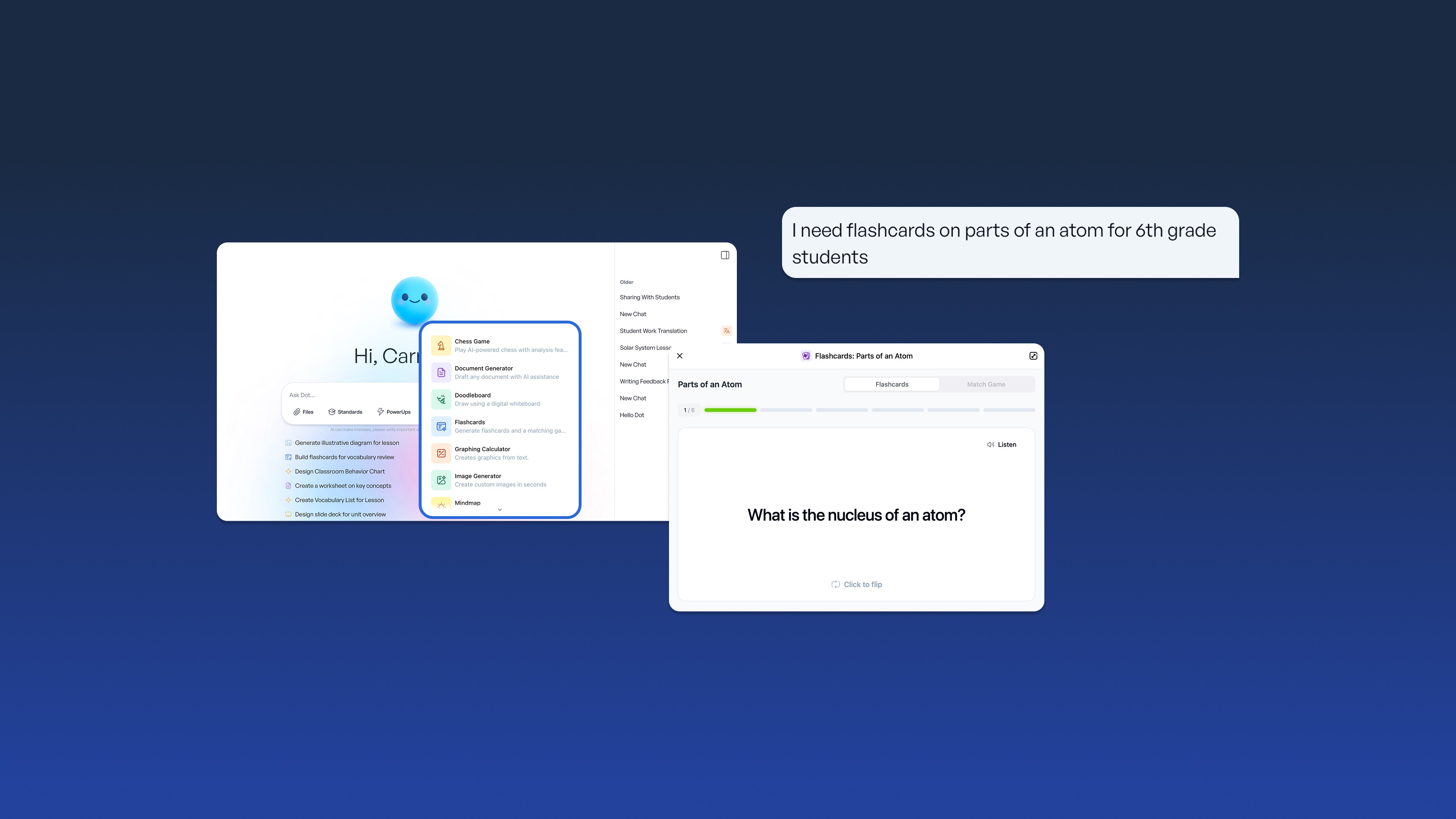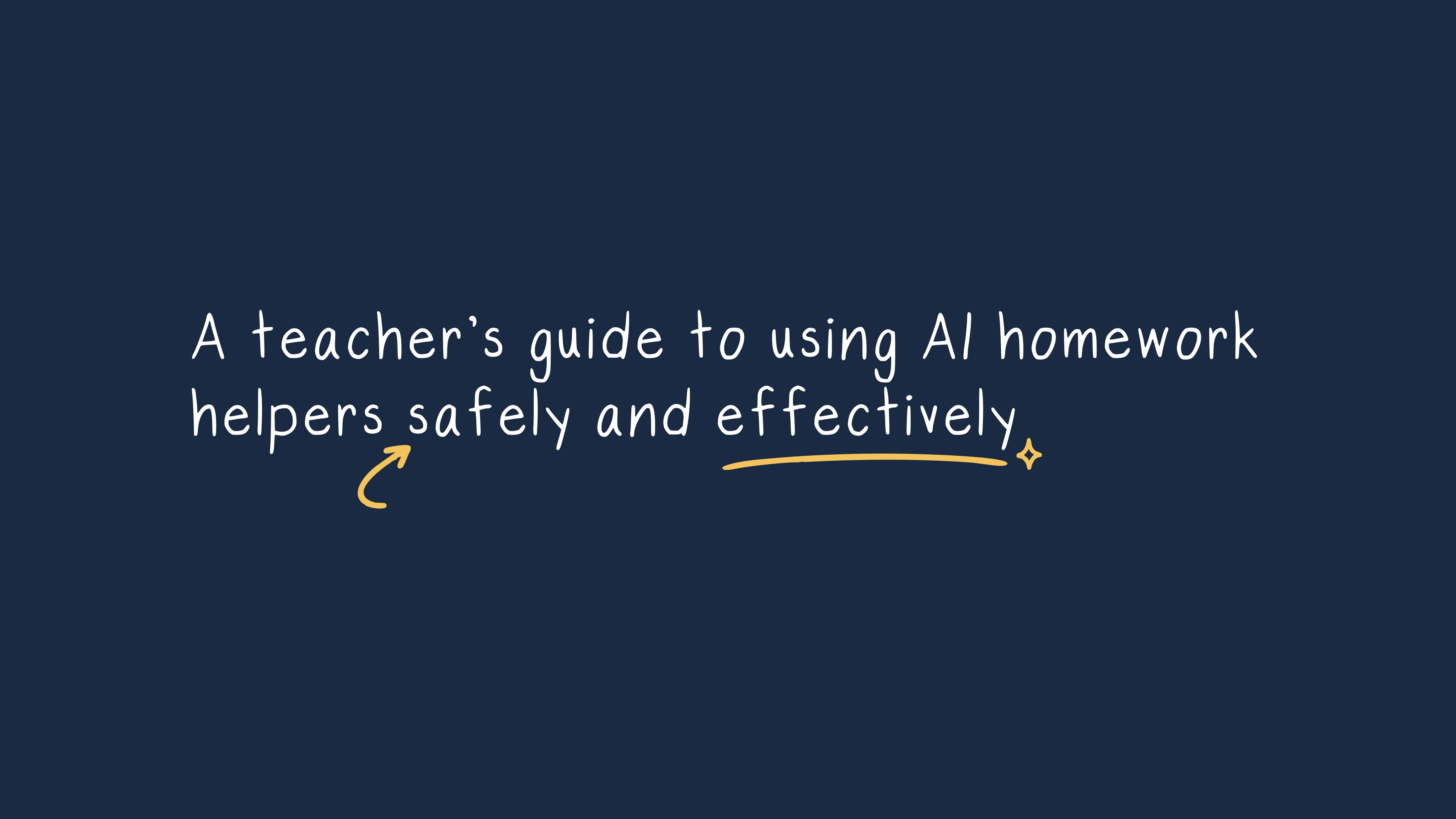Colton Taylor
May 6, 2025
Get started
SchoolAI is free for teachers
Imagine a classroom where every student receives personalized tutoring tailored to their unique learning style, pace, and needs—all day, every day. Sound impossible? It's not, thanks to AI tutoring systems that are having a transformative impact on education as we know it. These innovative tools are creating unprecedented opportunities for personalized learning at scale, serving as powerful allies to teachers rather than replacements.
Think of AI tutors as digital learning companions that adapt in real-time, providing the right content at the right moment for each student. They continuously adjust difficulty based on performance, deliver immediate feedback when students need it most, identify specific learning patterns, and offer around-the-clock educational support, making them invaluable for students across the achievement spectrum.
In the following sections, we'll explore how these systems work, the essential strategies for implementing them effectively in your school, how to overcome common adoption barriers, and a step-by-step action plan to make AI tutoring a successful reality in your educational environment.
Understanding AI tutoring for scalable personalized learning
Definition and components
AI tutoring systems create personalized learning experiences through four interconnected components working in harmony. The domain model houses educational content and subject knowledge, while the student model tracks individual progress, identifying strengths and weaknesses unique to each learner.
Meanwhile, the tutoring model determines optimal teaching strategies, and the user interface creates an engaging, accessible learning environment. Together, these elements adapt in real-time to meet each student's evolving needs.
Role in scaling personalized learning in your school
Have you ever wished you could clone your best teachers to reach every student individually? AI tutors make this vision achievable by enabling student-centered learning and customizing each learner's journey through:
Dynamic content adjustment based on individual performance
Targeted practice focusing precisely where students need reinforcement
Instant feedback that strengthens learning connections
Teaching methods matched to individual learning preferences
Students find these systems particularly engaging, thanks to game-like elements such as points and badges, interactive simulations that bring concepts to life, and smart difficulty adjustments that maintain the perfect balance between challenge and achievement.
Remember, though: AI tutors shine brightest as partners to human teachers, not replacements. They excel at delivering personalized practice and feedback, freeing teachers to focus on complex instruction, relationship building, and addressing needs that require human insight and emotional intelligence.
Implementation action plan for scaling AI tutoring
Ready to transform learning in your school? Follow this practical, step-by-step roadmap:
1. Assessment of current infrastructure
Begin with a comprehensive technology evaluation:
Inventory existing hardware and assess network capabilities
Test compatibility between your current software and potential AI platforms
Review data storage capacity and security measures
2. Integration with curriculum
Align AI tutoring meaningfully with your educational goals:
Map AI capabilities to your specific curriculum standards
Identify priority subjects and learning outcomes for AI enhancement
Develop instructional strategies that leverage AI capabilities
Create assessment approaches that synthesize AI data with teacher evaluation
Revisit these connections regularly as your curriculum evolves.
3. Teacher training and support
Equip your educators with both skills and confidence:
Provide interactive training focused on practical platform use
Organize collaborative practice sessions for hands-on experience
Establish peer mentorship networks for ongoing support
Create clear channels for technical assistance when needed
4. Data-driven decision making
Leverage AI insights to enhance instruction:
Train staff to interpret student performance data meaningfully
Identify intervention opportunities based on AI feedback
Regularly evaluate system effectiveness and student growth
Adjust instructional approaches based on emerging patterns
5. Phased implementation
Build success through a gradual, strategic rollout:
Start with carefully selected pilot classrooms or subject areas
Gather detailed feedback before expanding further
Document successful practices and lessons learned
Refine your approach based on initial implementation experiences
This measured approach builds confidence and allows for continuous improvement.
6. Continuous evaluation and improvement
Commit to ongoing refinement:
Monitor usage patterns and corresponding student outcomes
Solicit feedback from teachers, students, and parents
Watch for potential algorithmic biases affecting recommendations
Regularly update your implementation strategy based on evidence
Overcoming barriers to adoption in scaling AI tutoring
Even the most promising educational innovations can face challenges during implementation. Let's address the most common obstacles and how to overcome them.
Addressing educator concerns
Many dedicated teachers naturally question how AI fits into their educational philosophy or worry about learning complex new systems. Here's how to build teacher buy-in:
Offer hands-on, practical training that builds confidence with AI platforms, covering technical skills and pedagogical strategies.
Emphasize AI's role as a supportive tool, not a teacher replacement.
Cultivate teacher-led support networks where educators share successful practices and support each other's growth.
Develop clear implementation roadmaps with well-defined steps, responsibilities, and communication channels to help teachers navigate the transition with confidence.
Overcoming technological hurdles
Technical limitations can derail AI initiatives before they begin. Address these proactively by:
Conducting thorough technology assessments covering hardware, networks, software compatibility, and data management systems
Exploring cloud-based solutions with scalable pricing that reduce hardware demands and scale easily
Starting with focused pilot programs in select classrooms before wider implementation
Establishing robust technical support systems for troubleshooting and maintenance
Creating comprehensive data security protocols that protect student information while enabling personalized learning
Ethical considerations when enhancing personalized learning with AI
As AI tutors become more deeply integrated into education, being mindfulof the long-term impacts of AI is essential.
Data privacy remains paramount. Schools must establish clear guidelines for collecting, storing, and accessing student information. This includes adhering to regulations like FERPA in the US and GDPR in Europe while implementing robust security measures to safeguard sensitive student data.
Algorithmic bias requires vigilant attention. Without careful design and monitoring, AI systems may inadvertently favor certain student groups or miss important cultural nuances. Regular audits ensure these systems remain inclusive and accessible for all learners, including those with disabilities.
While AI tutoring can democratize access to quality instruction across diverse school settings, the digital divide presents a real challenge. Not all students have equal access to devices and reliable internet, potentially exacerbating existing educational inequities if not deliberately addressed.
In addition, the human element remains irreplaceable. Research confirms that AI tutors cannot provide the emotional support and empathy fundamental to effective learning. Schools should create balanced approaches that:
Establish appropriate guidelines for AI tutoring time
Incorporate collaborative learning activities
Foster meaningful peer interactions
Maintain strong teacher-student relationships
Enabling personalized study at scale
Scaling AI tutoring for personalized learning in your school represents a transformative opportunity to meet each student exactly where they are, while empowering teachers to work more effectively than ever before. These powerful tools enable truly individualized education at scale, complementing classroom teaching by handling routine practice and feedback while freeing teachers to focus on the irreplaceable human elements of excellent education.
Your implementation journey should balance technological possibilities with thoughtful planning, teacher leadership, and ethical considerations. Success depends on assessing readiness, selecting appropriate platforms, providing thorough training, and keeping teachers at the center of the learning process.
Ready to explore scalable AI tutoring foryour school? Contact SchoolAI today for a personalized consultation to help you develop a customized implementation strategy tailored to your unique educational environment and student needs.
Key takeaways
AI tutoring systems adapt to each student's learning style and pace while providing immediate feedback.
Effective AI tutors combine four components: domain models, student models, tutoring models, and user interfaces.
Implementation requires assessing infrastructure, aligning with curriculum, training teachers, and phased rollout.
Teacher buy-in demands emphasizing AI as a supportive tool rather than a replacement for human educators.
Ethical considerations include data privacy, addressing algorithmic bias, and maintaining the irreplaceable human element.
Transform your teaching with AI-powered tools for personalized learning
Always free for teachers.
Recent posts
REFRESH: AI adoption challenges in schools: How to prepare staff and infrastructure
Jennifer Grimes
—
Dec 19, 2025
REFRESH: AI integration: Adding AI tools into your school’s existing technology
Stephanie Howell
—
Dec 19, 2025
Create lesson plans that work: Strategic planning for teachers
Cheska Robinson
—
Dec 18, 2025
A teacher’s guide to using AI homework helpers safely and effectively
Heidi Morton
—
Dec 18, 2025





